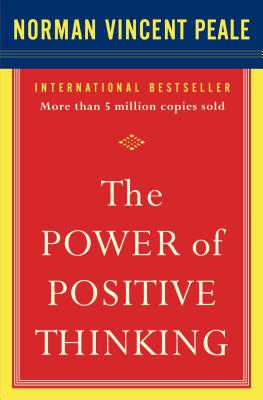
Positivity, or positive thinking, is a theme that has been prominent in the self-help realm for a long while. Norman Vincent Peale’s “The Power of Positive Thinking,” published in 1952, is regularly regarded as one of the foundational books of modern self-help.

Modern Positivity
Today, the positive messaging is as popular as ever, maybe even more so in the world of perfectly-posed displays of our fabulousness on social media. If you follow any motivational blogs or social media accounts, they’re full of “think positive” messaging: “Life is to short to be anything but happy.” “Never let anyone bring you down.” “Break the habit of negative talk.”
A lot of this messaging is pretty benign, or actually beneficial. There are extremes, though, such as the Law of Attraction, which demands you only maintain positive thoughts, because the positive energy you put out to the universe will come back to you (and on the flip side, negative energy will sabotage you).
I’m an optimistic, glass half-full type person. I do believe there is power in looking for the positive side of any situation. There are often opportunities buried in a challenge. I also believe that happiness is often (but not always!) a choice. You can often change your experience of a situation by changing your attitude towards it. (In fact, I regularly say this to my 6-year-old, who’s more of a pessimist than I am.) But, too much positivity might not be a good thing.
What’s the Problem?
Consider some of the possible pitfalls of too much positivity:
- A constant focus on positivity may lead us to ignore some facts about what’s happening around us. It becomes an illusion–plastic, false, just a veneer.
- It can even be a form of gaslighting, if we ignore or repress our true feelings about a situation (and those feelings will come back later).
- It may set us up for disappointment. The constant focus on positivity may instead breed the opposite: discontent with a reality that can’t always match the dream.
- We may even start blaming ourselves, that somehow our attitude is responsible when things don’t go as we hoped.
What’s the Alternative?
If it’s happiness we’re after, it might be useful to consider the Scandinavians. A number of Scandinavian countries–Denmark, Finland, Norway, Sweden–are regularly ranked as some of the happiest countries in the world. Certainly, things like universal healthcare and affordable education help. But perhaps there are other cultural factors at work that also contribute to their happiness.
I came across a theory somewhere that points to the fact that these happy people have historically created some pretty dark fiction. Murder mysteries. Movies that do not have a happy ending. Crime television shows. The dark, twisty fairytales of Danish author, Hans Christen Anderssen. They’re not always looking on the bright side or indulging in total fantasy. The theory goes that by immersing themselves in these darker themes in fiction, their real lives take on a much rosier hue in contrast. What an interesting possibility!

Yin + Yang by Hartwig HKD [Use License: (CC BY-ND 2.0)]
What do you think? Are we fooling ourselves with too much positivity? Or are you a believer in the power of positive thinking? Let us know in the comments, or join the discussion on Facebook.





